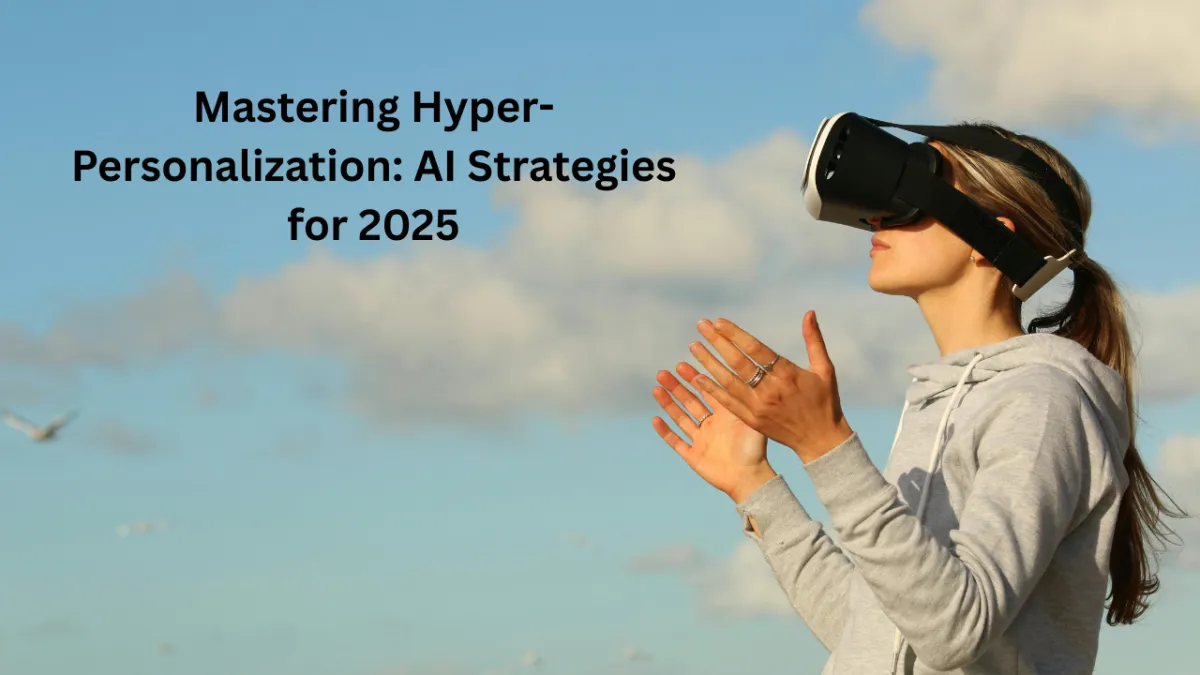
Mastering Hyper-Personalization: AI Strategies for 2025
Mastering Hyper-Personalization: AI Strategies for 2025
In the rapidly evolving digital landscape of 2025, hyper-personalization has emerged as a pivotal strategy for businesses aiming to enhance customer engagement and loyalty. By leveraging artificial intelligence (AI), companies can deliver tailored experiences that resonate with individual preferences, behaviors, and needs. This blog post delves into the transformative power of AI-driven hyper-personalization and offers actionable strategies to implement it effectively.
Understanding Hyper-Personalization
Hyper-personalization goes beyond traditional personalization by utilizing real-time data and AI to deliver more relevant content, product recommendations, and services to each user. Unlike basic personalization, which might include addressing a customer by name, hyper-personalization considers browsing behavior, purchase history, and even real-time location to tailor experiences.
The Role of AI in Hyper-Personalization
AI technologies, including machine learning and predictive analytics, are at the core of hyper-personalization. They enable businesses to analyze vast amounts of data to uncover insights about customer preferences and behaviors. This analysis allows for the creation of dynamic customer segments and the delivery of personalized content at scale.
Strategies for Implementing AI-Driven Hyper-Personalization

1. Dynamic Content Personalization
Utilize AI to deliver dynamic content that adapts to individual user preferences in real-time. This includes personalized product recommendations, tailored email campaigns, and customized website experiences.
Implementation Tips:
Employ AI-powered tools to test and optimize content variations.
Analyze user interaction data to refine content strategies continually.
2. Behavioral Segmentation
Move beyond demographic segmentation by analyzing user behaviors such as browsing patterns, purchase history, and engagement metrics. AI can identify patterns and group users into segments for targeted marketing efforts.
Implementation Tips:
Use AI analytics platforms to monitor and interpret user behavior.
Develop targeted campaigns for each behavioral segment to increase relevance and engagement.

3. Predictive Customer Journey Mapping
Leverage AI to predict future customer behaviors and needs, allowing for proactive engagement strategies. Predictive analytics can forecast customer actions, enabling timely and relevant interactions.
Implementation Tips:
Integrate predictive analytics tools to anticipate customer needs.
Design customer journey maps that incorporate predicted behaviors for more effective touchpoints.
4. Real-Time Personalization Across Channels
Ensure consistent and personalized experiences across all customer touchpoints, including websites, mobile apps, email, and social media. AI can synchronize data across channels to maintain a unified customer profile.
Implementation Tips:
Adopt omnichannel marketing platforms that integrate AI for seamless personalization.
Monitor customer interactions across channels to adjust strategies in real-time.

5. Ethical Data Usage and Privacy Compliance
With increased data collection comes the responsibility to handle customer information ethically and comply with privacy regulations. Transparency in data usage builds trust and enhances customer relationships.
Implementation Tips:
Clearly communicate data collection practices and obtain explicit consent.
Ensure compliance with regulations like GDPR and CCPA.
Benefits of AI-Driven Hyper-Personalization
Implementing AI-driven hyper-personalization strategies offers numerous benefits:
Enhanced Customer Engagement: Personalized experiences increase user engagement and satisfaction.
Improved Conversion Rates: Tailored content and offers lead to higher conversion rates.
Increased Customer Loyalty: Relevant interactions foster stronger customer relationships and loyalty.
Efficient Marketing Spend: Targeted strategies reduce wasted ad spend and improve ROI.
Case Studies: Success Stories in Hyper-Personalization
Amazon: Utilizes AI to provide personalized product recommendations, significantly boosting sales and customer satisfaction.
Netflix: Employs AI algorithms to suggest content based on viewing history, enhancing user retention.
Spotify: Uses AI to curate personalized playlists, increasing user engagement and time spent on the platform.

Future Trends in AI and Hyper-Personalization
Looking ahead, several trends are poised to shape the future of AI-driven hyper-personalization:
Voice and Conversational AI: Integration of voice assistants and chatbots for more natural interactions.
Augmented Reality (AR): Personalized AR experiences for product visualization and engagement.
Emotional AI: AI systems capable of recognizing and responding to human emotions to enhance personalization.
By embracing AI-driven hyper-personalization, businesses can create more meaningful connections with their customers, leading to increased satisfaction, loyalty, and long-term success. As technology continues to advance, staying ahead of these trends will be crucial for companies aiming to thrive in the competitive landscape of 2025.
